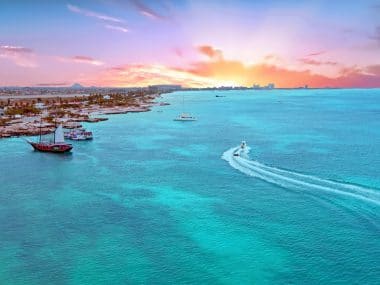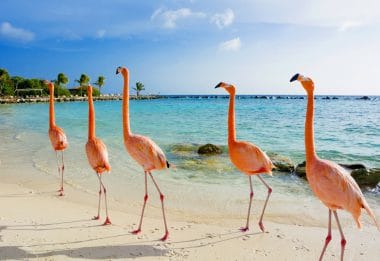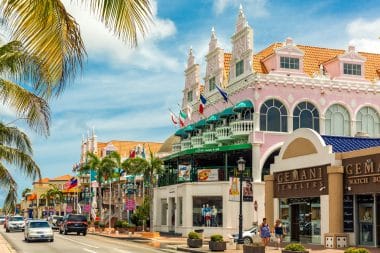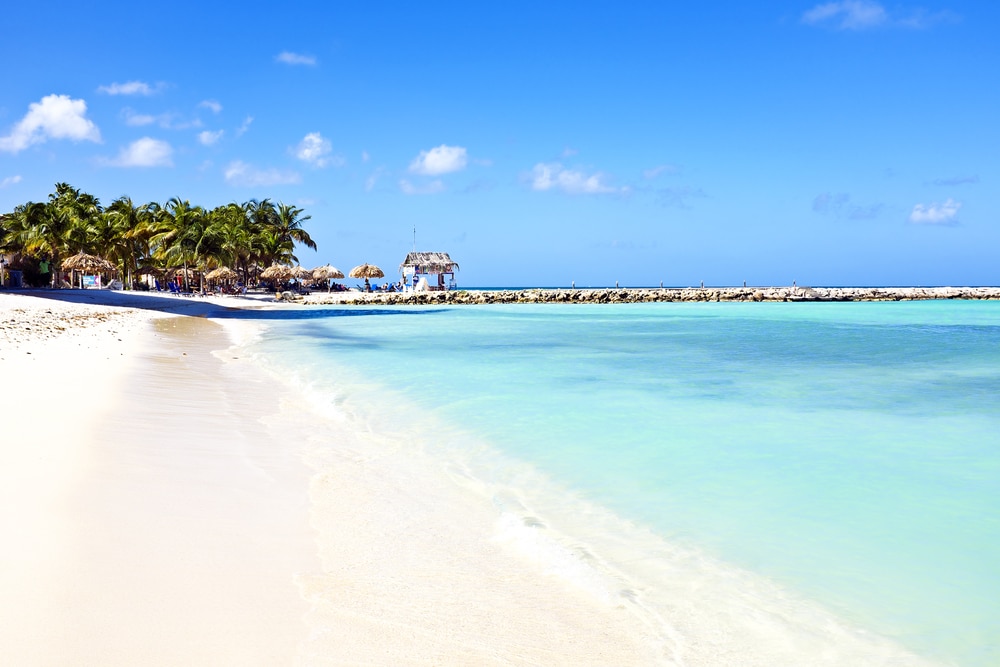Aruba is considered the first of the so-called ABC Islands (Aruba, Bonaire and Curacao). The island was inhabited more than 3000 years ago. This population group, known as Arawak – from the Caiquetio tribe – is believed to have immigrated from Venezuela via the offshore and neighboring islands of Bonaire and Curacao. Even today, Papiamento, the dialect of the Arawak, is used as an officially valid and spoken language. This is considered one of the four main languages, along with Spanish, English and Dutch. However, to a much lesser extent. The reason for this may be the increasing settlement, not least by Europeans. Today, the island of Aruba, which is located just under 25 kilometers off the coast of Venezuela , is one of the more expensive islands in the Caribbean. Aruba used to be part of the Netherlands Antilles.
Islas Inutiles historical overview

Aruba a different Mallorca?
Despite the fact that it derives its prosperity mainly from tourism, Aruba does not have mass tourism similar to Mallorca (especially El Arenal). Despite the increasing number, in recent years there have been an average of 2 million holidaymakers who visit Aruba year after year. One reason for this may be the relatively long journey. Aruba can be reached from Amsterdam in about 10 hours. Which can probably be seen as one of the reasons why mainly Americans and South Americans visit the paradisiacal island. Whatever the constellation of holiday seekers may look like. The fact is that the airport, the “Aeropuerto International Reina Beatrix”, is one of the most modern but also the safest in the Caribbean .
The climate in Aruba

Special features of the island of Aruba

The most beautiful beaches in Aruba
- Eagle Beach – Eagle Beach is known for its beautiful white sand beaches and crystal clear waters. It is also the widest beach in Aruba and offers many amenities such as umbrellas, sun loungers and water sports facilities.
- Palm Beach – Another very popular beach in Aruba is Palm Beach, which also offers beautiful white sand beaches and crystal clear waters. There are many hotels, restaurants and shops near the beach.
- Baby Beach – Baby Beach is located in the south of Aruba and is ideal for families with young children, as the water is very shallow and therefore not too dangerous. There are also plenty of picnic areas and BBQ facilities.
- Mangel Halto – Mangel Halto is a quiet beach in southern Aruba and is ideal for snorkeling and diving. There are many coral reefs and colorful fish to discover.
- Arashi Beach – Arashi Beach is another beautiful beach in Aruba and is ideal for snorkeling and swimming. There are also many rocks and caves nearby to explore.
General information:
- Layer: Aruba is an island in the southern Caribbean, about 29 kilometers north of Venezuela.
It is part of the Kingdom of the Netherlands. - Area: The island has an area of about 180 square kilometers.
- Population: Aruba has a population of approximately 110,000 inhabitants.
History:
- Protohistory: Aruba was originally settled by the Arawak Indians before it was discovered by the Spanish in 1499.
- Colonial era: In the 17th century, the Dutch took control of Aruba.
The island was part of the Netherlands Antilles until 1986, when it received autonomous status within the Kingdom of the Netherlands.
Nature and Environment:
- Climate: Aruba has a dry climate with low rainfall and warm temperatures throughout the year.
The island lies outside the hurricane belt. - Landscape: The landscape of Aruba is characterized by white sandy beaches, cacti, rock formations and the famous Divi-Divi trees, which are shaped by the steady trade winds.
- National parks: Arikok National Park covers about 20% of the island and protects a variety of flora and fauna, including rare plants and animals such as the Aruban cave thrush.
Tourism:
- Beaches: Aruba is known for its stunning beaches such as Eagle Beach and Palm Beach, which are among the best in the world.
- Activities: The island offers numerous leisure activities such as snorkeling, diving, windsurfing, sailing and golfing.
Hiking and off-road tours in Arikok National Park are also popular. - Culture: Aruba has a rich cultural scene with numerous festivals, carnival parades, and cultural events throughout the year.
The cuisine is a mix of Caribbean, South American and Dutch influences.
Reachability:
- Transport: Queen Beatrix International Airport offers numerous direct flights from North America, Europe and the Caribbean.
The island also has a well-developed road network and public transport.
Special features:
- Economy: Aruba’s economy is heavily dependent on tourism.
The island also has a free trade zone and is an important location for oil refineries. - Language: The official languages are Dutch and Papiamento, a creole language.
English and Spanish are also widely spoken. - Safety: Aruba is considered one of the safest islands in the Caribbean, making it a popular destination for tourists.


